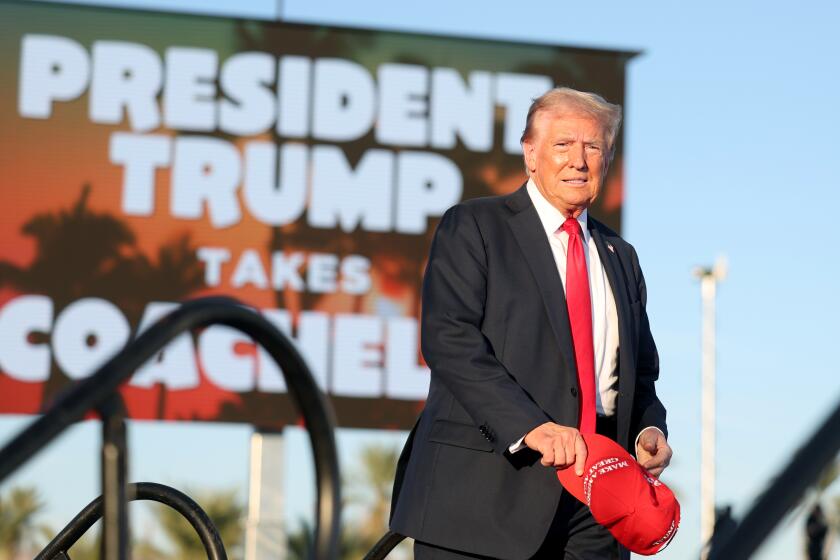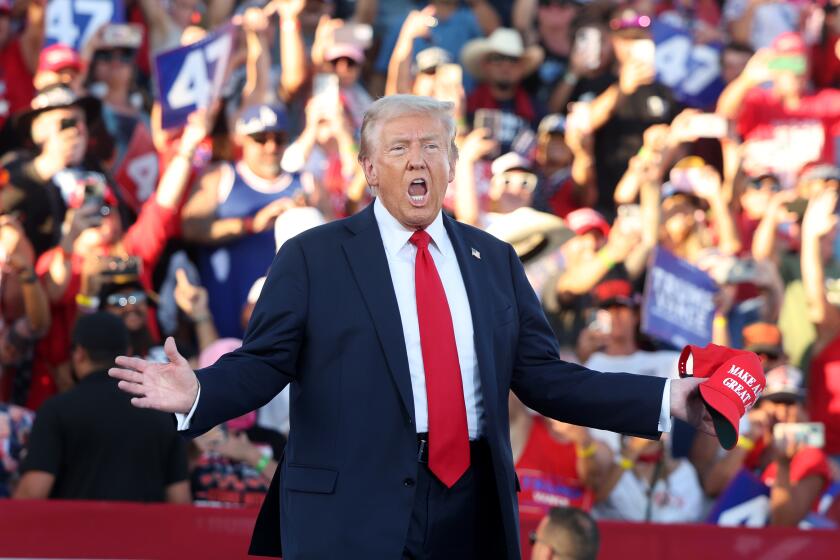A big question complicating the climate debate: Are current policies only benefiting the rich?
Reporting from Sacramento — In early 2015, Democratic members of the state Assembly huddled in a Cal State Sacramento conference room to hear Mary Nichols, chair of the powerful Air Resources Board, explain how her agency handles the billions of dollars collected from California’s marquee program to fight climate change.
Quickly, the conversation grew heated. More than half a dozen lawmakers unhappy with the amount of money flowing to poor communities from the system known as cap and trade began peppering Nichols with questions, according to three lawmakers who were in the room.
Nichols responded, the lawmakers said, that low-income residents were getting the help they needed. Everyone in the state, she said, benefited from clean air — an answer that convinced the Assembly members Nichols was dismissing them.
Frustrations mounted. Assemblyman Jimmy Gomez, who represents Elysian Park, Echo Park and other nearby lower-income and gentrifying neighborhoods in Los Angeles, told a colleague the answer sounded like “a trickle-down environmental policy.” The furor only stopped when a moderator put an end to the debate.
“That came off as a ‘Let-them-eat-cake’ moment,” Gomez said recently.
“A poor person in my community doesn’t see a person driving a Tesla and say, ‘That benefits me,’” he said.
Nichols recalled the conversation differently, saying she doesn’t remember being challenged specifically about spending on low-income communities. “I don’t recall a question that would have led me to say something that was dismissive of that concern because I would not be dismissive of that concern,” Nichols said. “I share the concern.”
Still, Gomez and other lawmakers have identified that 2015 meeting as a watershed moment that’s now escalated to anger about how the state spends money generated from its climate change program — criticism that’s often cast in terms of race and class. And as Gov. Jerry Brown and legislative leadership aim this month to extend the state’s targets to reduce greenhouse gases and the program that funds the effort, the fight over spending has emerged as one of the most prominent sticking points.
Unless more money gets directed to poor communities, lawmakers whose votes may be needed to continue the climate change efforts say they’re wary. Assemblyman Jim Cooper (D-Elk Grove), a leader in the business-aligned bloc of his party, said he hasn’t made up his mind, in part, because he’s outraged people living in a handful of wealthy Bay Area and West Los Angeles communities have received by far the largest shares of state rebates to purchase electric cars.
“It’s welfare for the rich,” Cooper said. “It’s dead wrong in my book. It should be wrong in anybody’s book.”
Live updates at the end of the legislative session »
The state’s push to sharply reduce greenhouse gas emissions is primarily funded by auctioning credits to businesses that can then exceed the maximum level of emissions, a program known as cap and trade. Since the auctions began in 2012, the effort has raised more than $4 billion with the money required to be spent on efforts that cut carbon emissions. The cash funds the popular electric car rebates, the state’s proposed high-speed rail project and dozens of other programs.
The money has given lawmakers a unique way to bring home substantial dollars for their communities. But the climate debate’s global nature has put a twist on the aphorism that all politics is local.
Brown, Nichols and legislative leaders traveled to Paris last winter to take part in the U.N. summit on climate change, and much of that discussion has focused the issue’s impacts far beyond California.
That sometimes has caused the leadership of the Air Resources Board to overlook local concerns, said Assemblyman Sebastian Ridley-Thomas (D-Los Angeles).
“Because they’re fighting a global, historic battle, their leaders, their talking points, their focus is the global,” said Ridley-Thomas, noting that the air board had widely publicized its actions against German automaker Volkswagen over major emission violations.
“Well, what does that have to do with whether or not we are improving ... greater Los Angeles?” the assemblyman asked.
Though particularly pointed now, accusations of inattention to low-income communities have festered for years, often bleeding into debates about other high-profile environmental legislation.
Last year, a number of black and Latino Democratic lawmakers balked at a proposal to cut gasoline use in half across the state, questioning how the provision or the state’s broad environmental program would benefit their constituents. That opposition forced Brown and legislative leaders to remove the provision from a major climate bill.
A focus on poor communities is all the more urgent, said Assemblywoman Autumn Burke (D-Inglewood), because research has shown they are disproportionately affected by pollution and climate change.
“They’re the ones who have to live with bad air and who live with black water,” Burke said. “To not have those people at the table who are living the worst conditions, to me, it’s criminal.”
Brown, legislative leadership and the Air Resources Board have responded to lawmakers’ concerns with a number of measures designed to increase attention on the needs of low-income residents.
They set a $250,000 income cap on individuals eligible for clean car subsidies and created a more generous program to benefit poorer residents. They’re creating a new, executive-level position within the air board to handle environmental justice issues. And they added two new board members — the first of the now 14 members not appointed by the governor — specifically to represent the needs of disadvantaged communities.
Of the nearly $1 billion in climate dollars invested through last year, more than half benefitted disadvantaged communities — defined as regions with high levels of pollution and high poverty — and almost 40% was directly invested in those communities, according to Air Resources Board statistics.
Still, Gomez and others have argued that those definitions need to be further refined to ensure that residents getting those dollars were significantly below the federal poverty line.
One major problem frustrating climate spending is that for two years Brown and lawmakers have failed to reach an agreement in allocating what’s now grown to $1.4 billion of cap-and-trade money sitting in an account. The dollars have been part of negotiations over extending the greenhouse gas emission reduction targets and the cap-and-trade program through 2030.
Last week, Senate President Pro Tem Kevin de León (D-Los Angeles) unveiled a climate spending plan that sharply increases dollars targeted for low-income residents. It quintuples planned spending on the clean car subsidy for low-income residents to $150 million — allowing it to grow from pilot efforts in Los Angeles and the San Joaquin Valley to the entire state.
De León’s plan pays for that increase by slicing more than $100 million out of Brown’s proposed allocation for the more broad-based electric vehicle rebate program.
The state Senate leader, who has authored multiple laws to increase climate spending on disadvantaged communities, joked that the goal was to make mariachi music as likely to be heard from an electric car’s radio as National Public Radio.
He said his spending plan gives lawmakers who say they’re interested in directing money to low-income communities — including those who haven’t voted to continue the climate programs in the past — an opportunity. In 2015, the bill to extend the greenhouse gas reduction targets, SB 32, fell 11 votes short of passage in the Assembly, and no more than that many Assembly Democrats can defect from the party caucus this year.
“Now is a time to put your money where your mouth is,” De León said.
The governor has not commented on De León’s spending plan, but agrees that his administration could do more to assuage lawmaker concerns about spending in low-income neighborhoods, according to Brown spokesman Evan Westrup.
“There’s still a challenge and much more to do,” Westrup said.
The governor supports proposed bills from Gomez, Cooper, Burke and a measure from Sen. Ricardo Lara (D-Bell Gardens) that would burnish the state’s use of climate dollars to help disadvantaged communities, he said.
Both the governor’s support for his legislation and De León’s spending plan encouraged Gomez. He said that without such reforms to the climate program, there might not be enough votes in the Legislature — his own included — to extend the state’s greenhouse gas reduction targets by the end of the legislative session in less than two weeks.
“I’ve been pushing for the longest time that you get the votes easier and with more enthusiasm when people feel like you’re addressing their concerns,” Gomez said.
Follow me at @dillonliam on Twitter
ALSO
While cap-and-trade funds stay mired in debate, businesses feel the hit
It’s time for the California Air Resources Board to focus on low-income areas, lawmakers say
Why climate law advocates are watching these black and Latino lawmakers
California lawmakers unplug state’s electric car program
Follow the action in Sacramento
More to Read
Get the L.A. Times Politics newsletter
Deeply reported insights into legislation, politics and policy from Sacramento, Washington and beyond. In your inbox three times per week.
You may occasionally receive promotional content from the Los Angeles Times.











